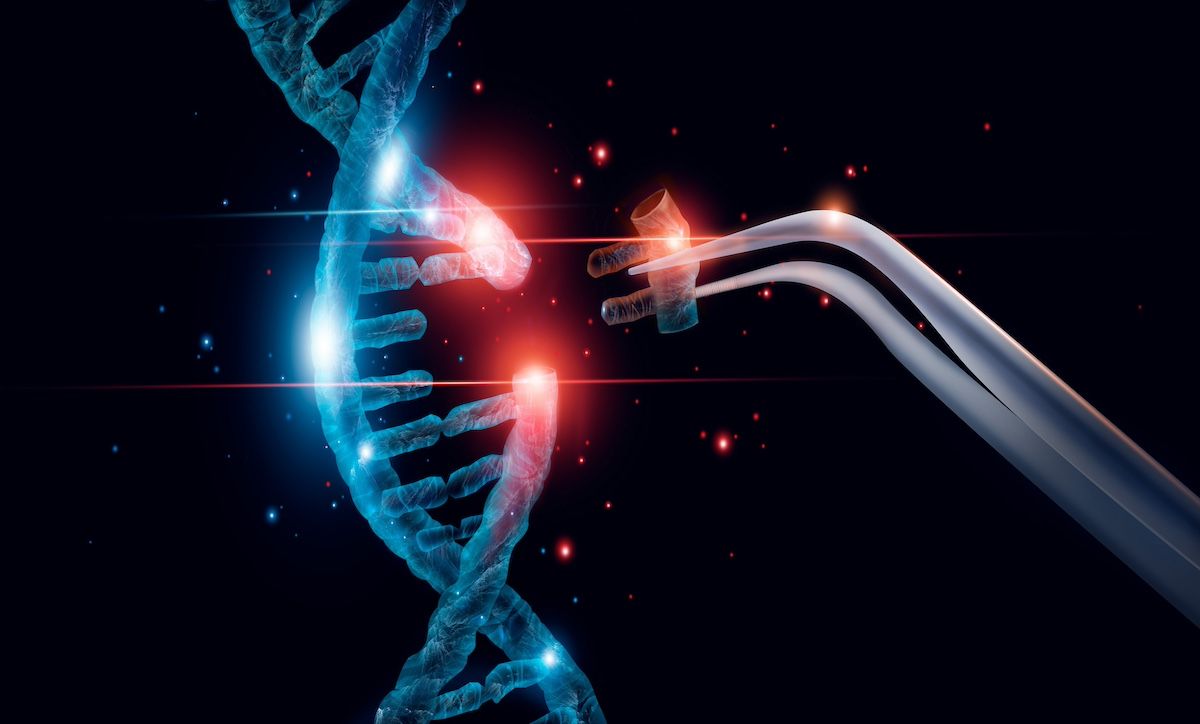- Center on Health Equity & Access
- Clinical
- Health Care Cost
- Health Care Delivery
- Insurance
- Policy
- Technology
- Value-Based Care
Phase 3 Data Show Exa-Cel Prevents Vaso-Occlusive Crises for At Least 1 Year in SCD
Data from the study showed that exa-cel prevented vaso-occlusive crises in all but 1 of the 30 evaluable patients for at least 12 months.
Exagamglogene autotemcel (exa-cel; Casgevy) prevented vaso-occlusive crises in 97% of patients with sickle cell disease (SCD) for at least 1 year, according to findings from a phase 3 study of the newly approved clustered regularly interspaced short palindromic repeats (CRISPR) gene therapy.1
Genetic and gene manipulation concept | Image Credit: © ipopba - stock.adobe.com

A data readout from the ongoing 2-year open-label study, published in the New England Journal of Medicine, showed that the CRISPR treatment prevented vaso-occlusive crises following an increase in fetal hemoglobin and total hemoglobin levels. Patients have been enrolled across 16 sites globally, including in the US, Canada, France, and the United Kingdom.
“These results show that a one-time treatment with nonviral ex vivo CRISPR-Cas9 editing of the erythroid-specific enhancer region of BCL11A reactivated fetal hemoglobin production in erythrocytes to levels previously shown to be protective in persons with hereditary persistence of fetal hemoglobin and sickle cell disease (>20% fetal hemoglobin in pancellular distribution) and resulted in a clinical benefit,” the researchers wrote.
Exa-cel gained FDA approval for use in patients with SCD in December 2023.2 Considering the need for high-dose chemotherapy prior to infusion, high cost of treatment, and scarcity of specialized treatment centers, a pair of experts in an accompanying editorial3 highlighted the need for addressing health care inequities to ensure accessibility of treatments like exa-cel. Potential approaches include use of in vivo deliverability of hematopoietic stem and progenitor cell modification.
Data from the study showed that exa-cel prevented vaso-occlusive crises in all but 1 of the 30 evaluable patients (97%; 95% CI, 83%-100%) for at least 12 months—the study’s primary end point.1 For the 29 patients who remained free from vaso-occlusive crises at 12 months, mean duration of freedom was 22.4 months (range, 14.8-45.5), and 28 of these patients remained free of vaso-occlusive crises at the time of data cut-off.
Patients, aged between 12 and 35 years, received a single dose of intravenous exa-cel for 2 to 7 days following myeloablative conditions with busulfan infusion. All patients included in the study—designed by the drug’s developers Vertex Pharmaceuticals and CRISPR Therapeutics in collaboration with a steering committee—had severe sickle cell disease and at least 2 vaso-occlusive crises per year in the 2 years prior to study enrollment.
Vaso-occlusive crisis, assessed by an independent committee, was considered broadly in the study, defined as any event that resulted in evaluation and treatment at the emergency department or another health care facility. These instances included acute pain events, priapism, and acute chest syndrome.
Over the study’s median follow-up time of 19.3 months, none of the 30 patients were hospitalized for vaso-occlusive crises throughout a consecutive 12 months, a key secondary endpoint of the study.
The researchers also explored the impact of exa-cel infusion on hemoglobin and fetal hemoglobin levels (secondary end point) in the full analysis cohort, which included 44 patients who received an exa-cel infusion. The one-time treatment yielded early and sustained increases in both levels. Patients stopped red-cell transfusions at a median of 20 days following infusions and maintained normal or near-normal levels of total hemoglobin after 6 months.
All 44 patients had at least 1 adverse event following infusion, most of which were grade 1 or grade 2, and 42 patients had adverse events of grade 3 or grade 4. The most common grade 3 or grade 4 adverse events, occurring in at least 5% of patients, included stomatitis (55%), febrile neutropenia (48%), decreased platelet count (48%), and decreased appetite (41%).
“Although all the patients had adverse events, in most patients these events were considered by the investigators to be related to the busulfan-based conditioning regimen and occurred within the first 6 months after the exa-cel infusion,” the researchers explained. “Overall, the safety profile of exa-cel was generally consistent with myeloablative busulfan-based conditioning and autologous transplantation.”
There was 1 death reported in the study 268 days following exa-cel infusion, resulting from respiratory failure from SARS-CoV-2. The patient also had busulfan-associated lung injury and a pre-existing lung disease.
References
1. Frangoul H, Locatelli F, Sharma A, et al. Exagamglogene autotemcel for severe sickle cell disease. N Engl J Med. Published online April 24, 2024. doi:10.1056/NEJMoa2309676
2. Bonavitacola J. FDA approves exagamglogene autotemcel, first CRISPR gene-editing therapy for SCD. AJMC. December 8, 2023. Accessed May 2, 2024. https://www.ajmc.com/view/fda-approves-exagamglogene-autotemcel-first-crispr-gene-editing-therapy-for-scd
3. McCune J, Kiem HP. Extending gene medicines to all in need. N Engl J Med. Published online April 24, 2024. doi:10.1056/NEJMe2403104
